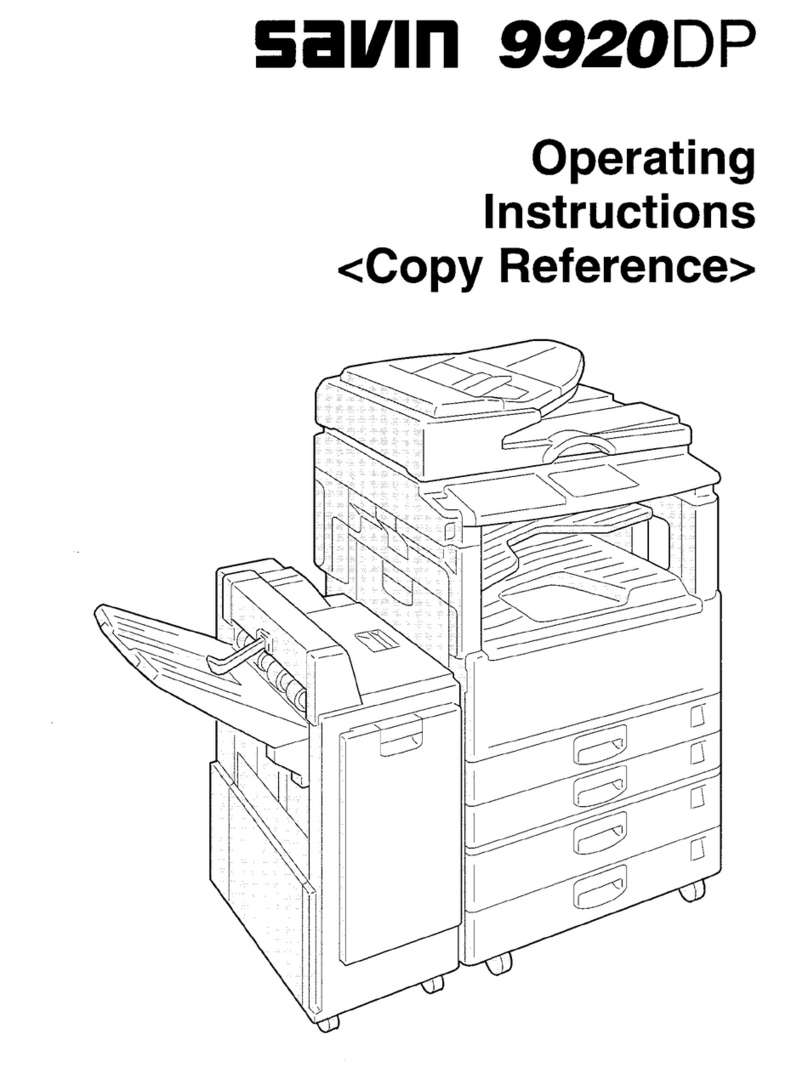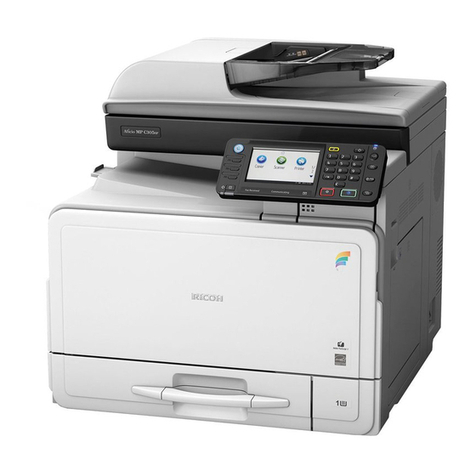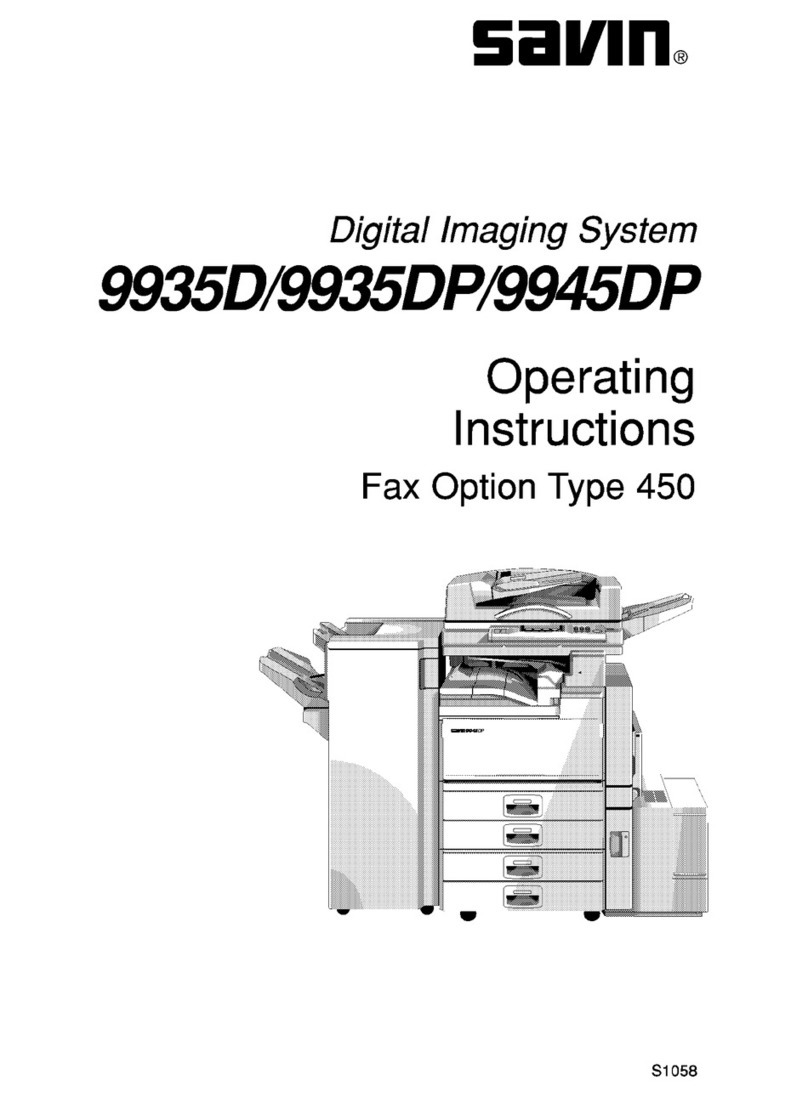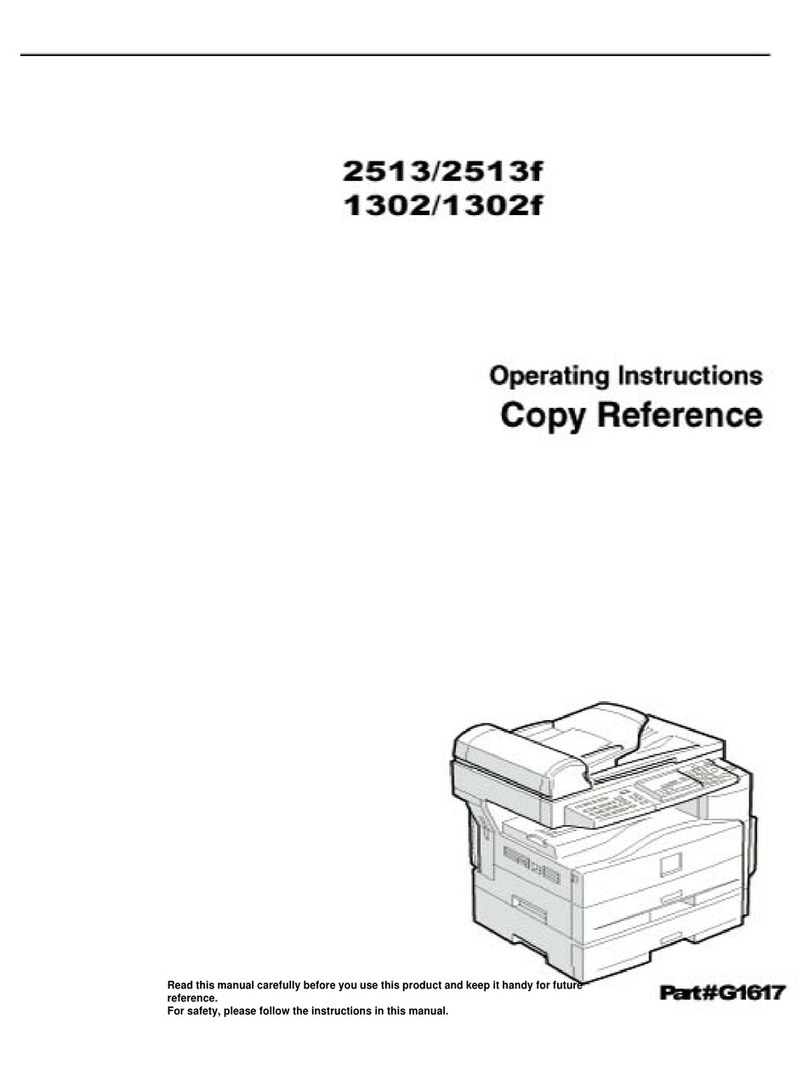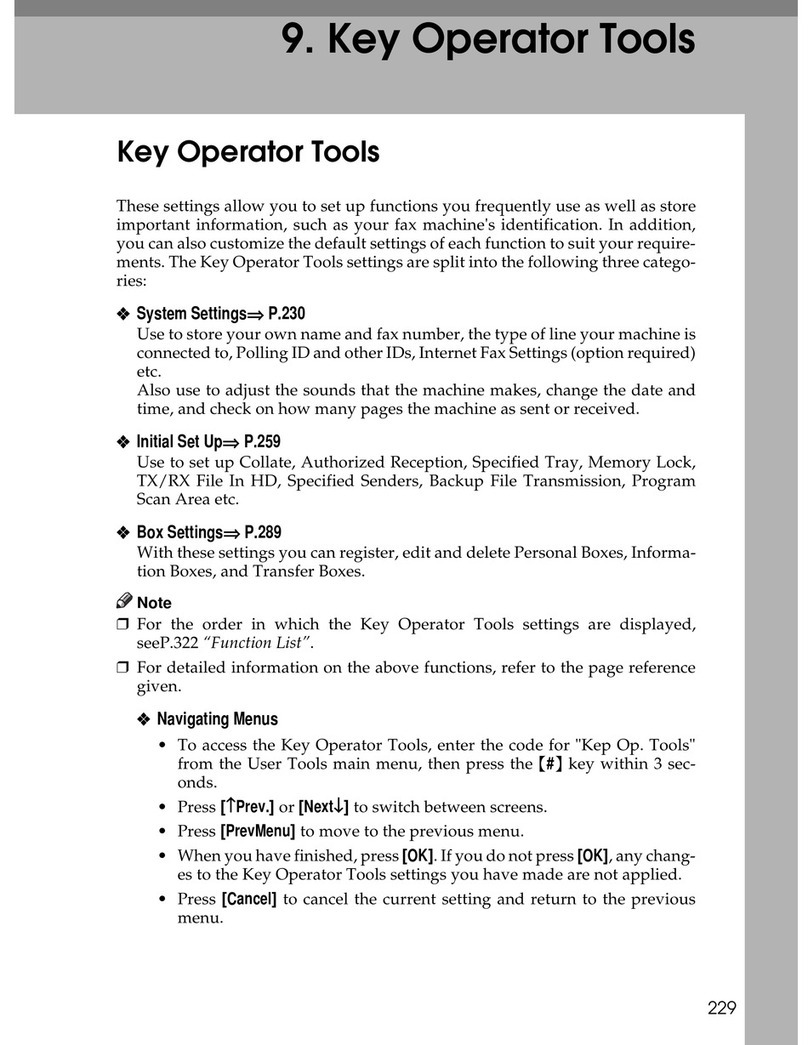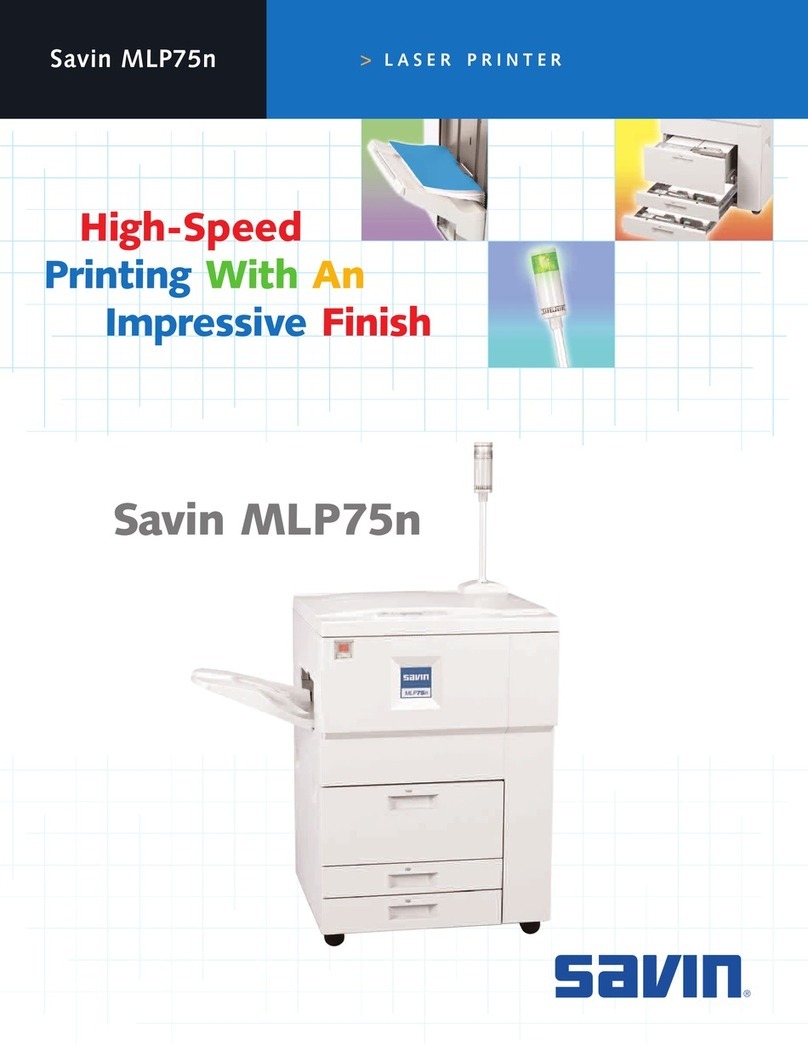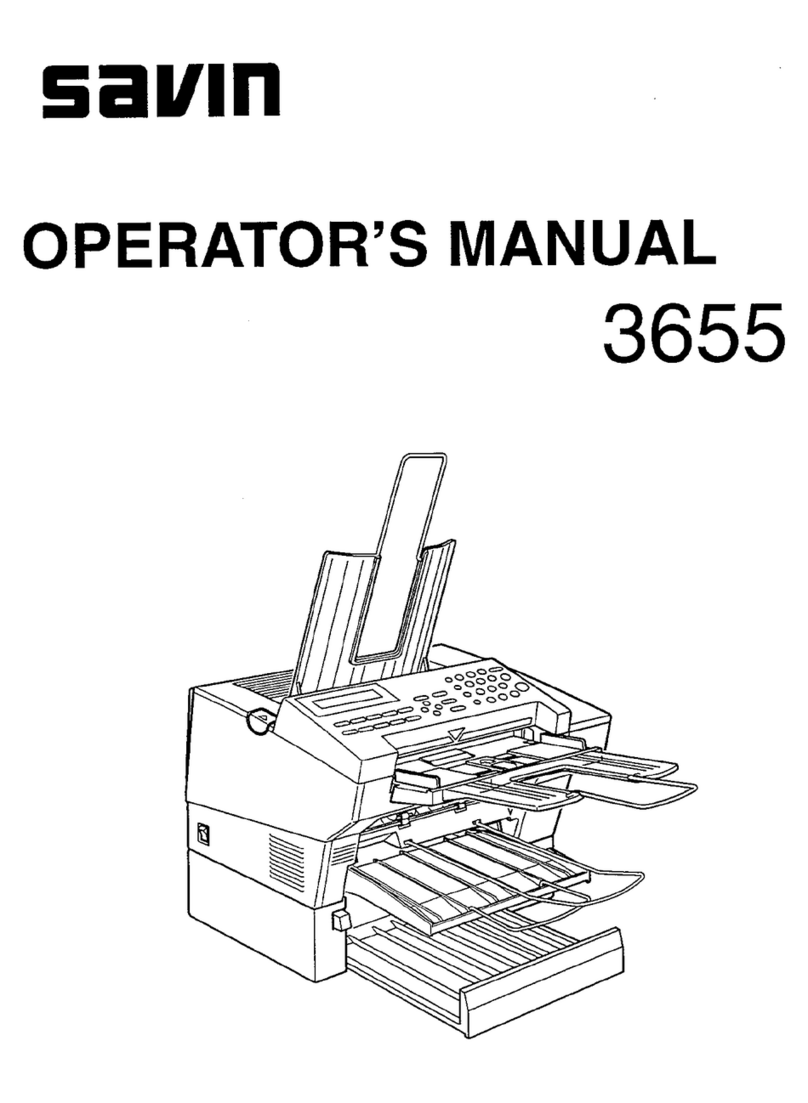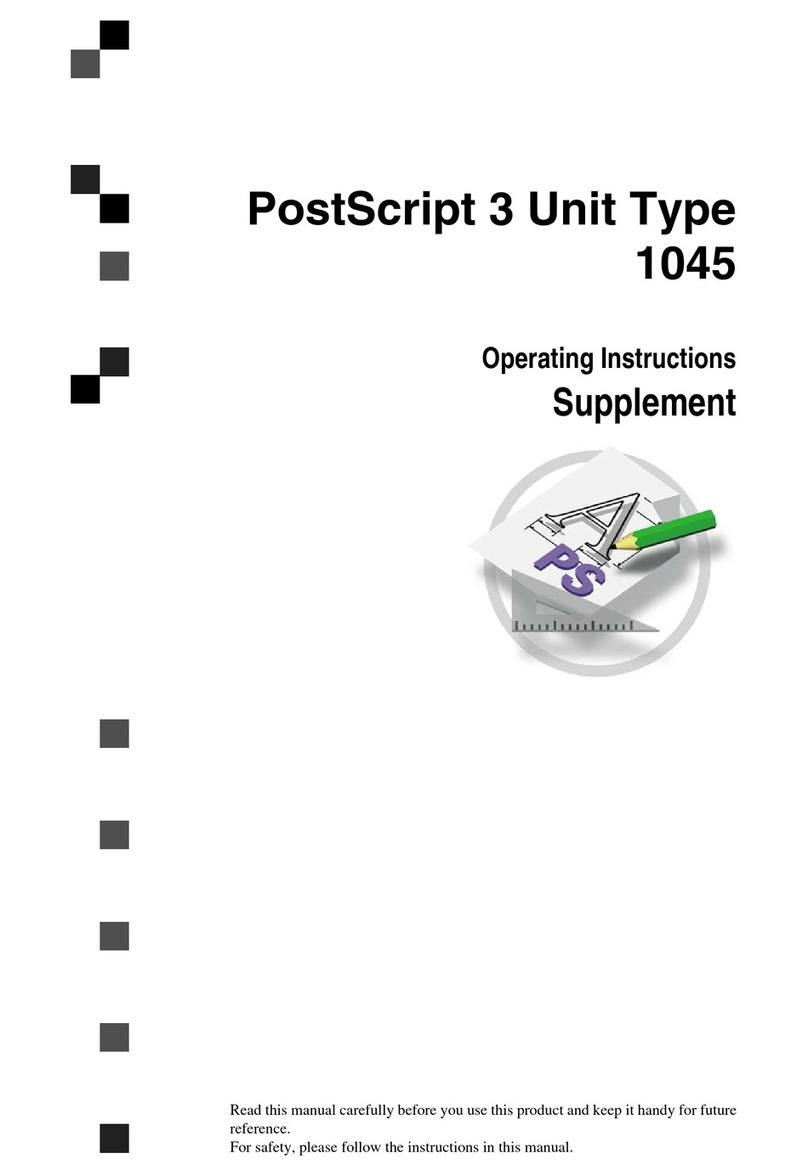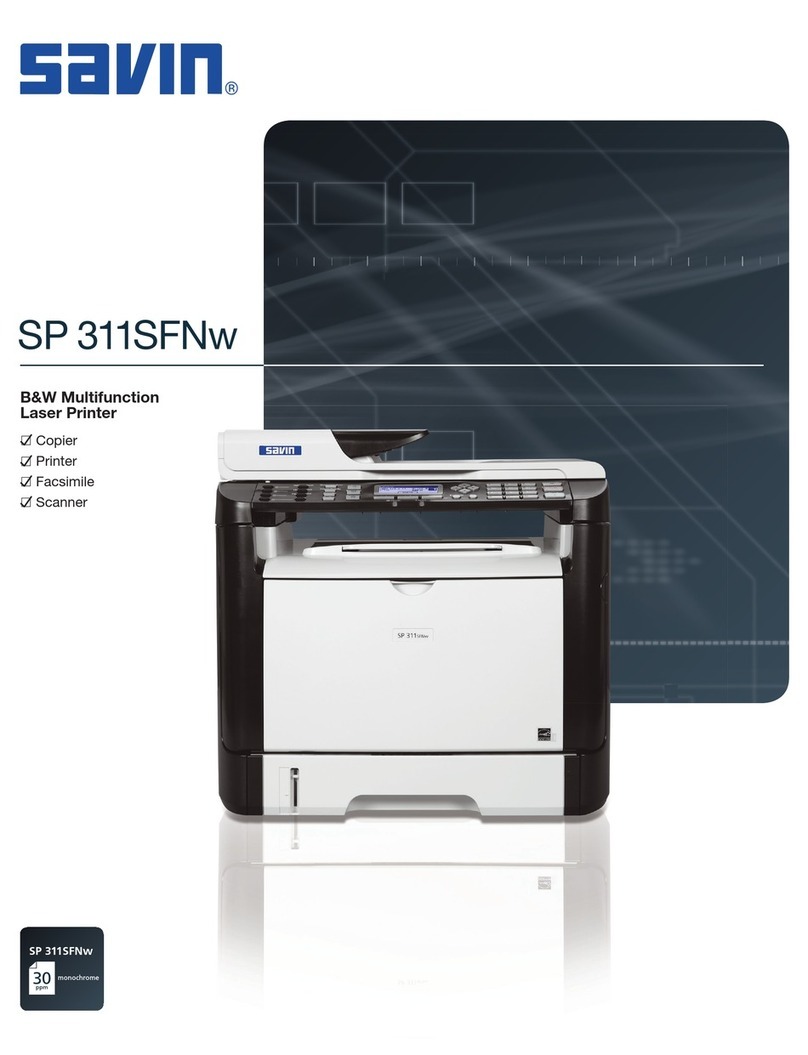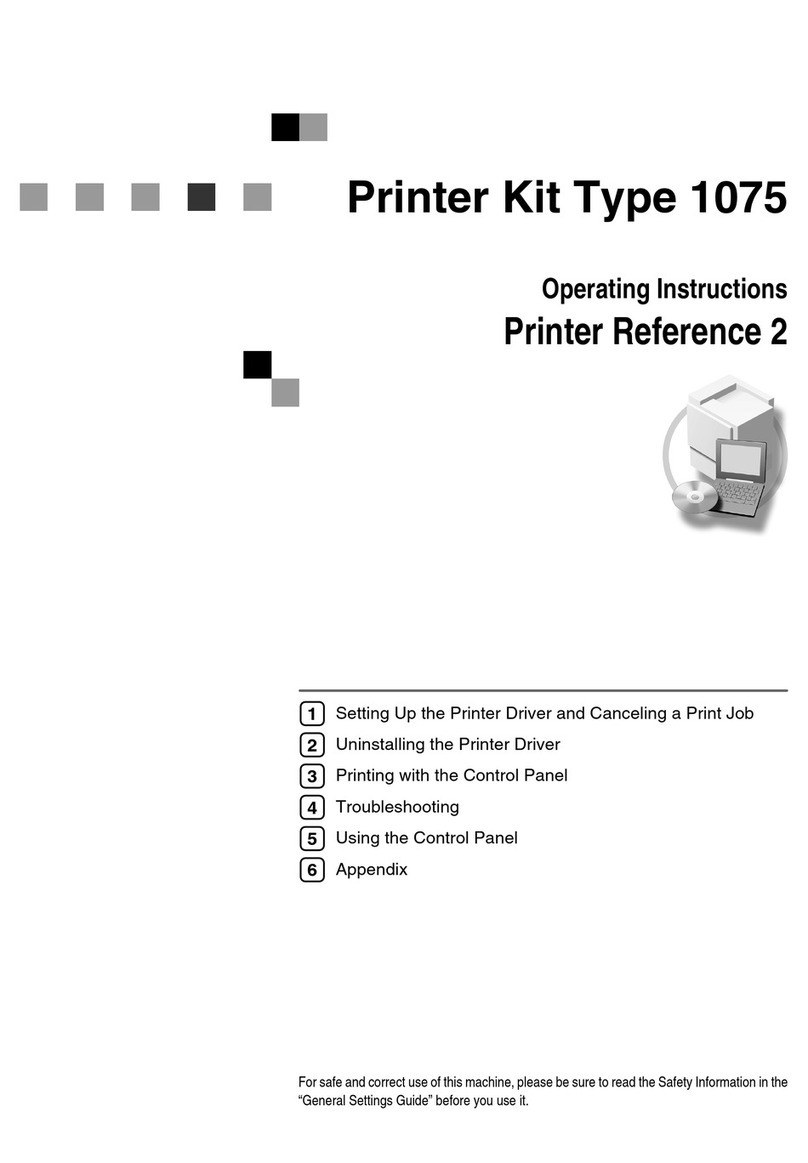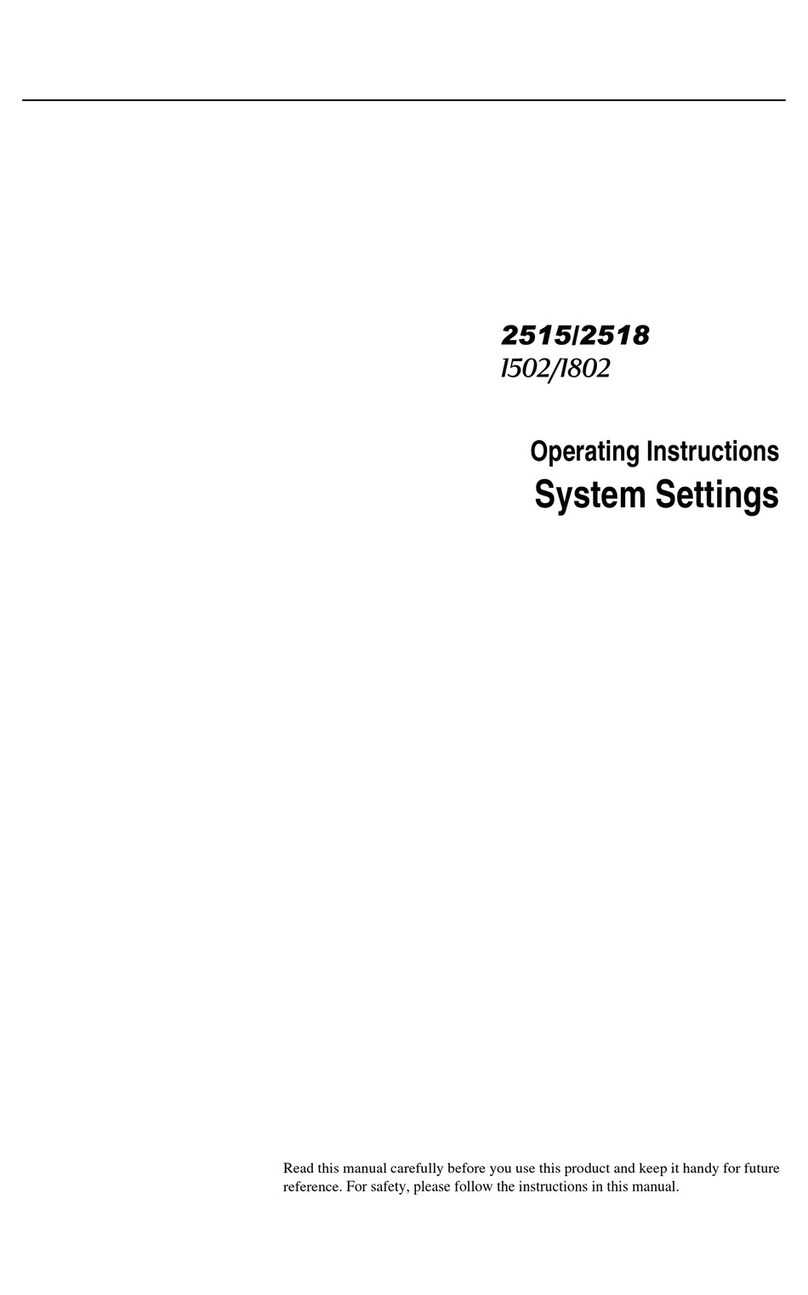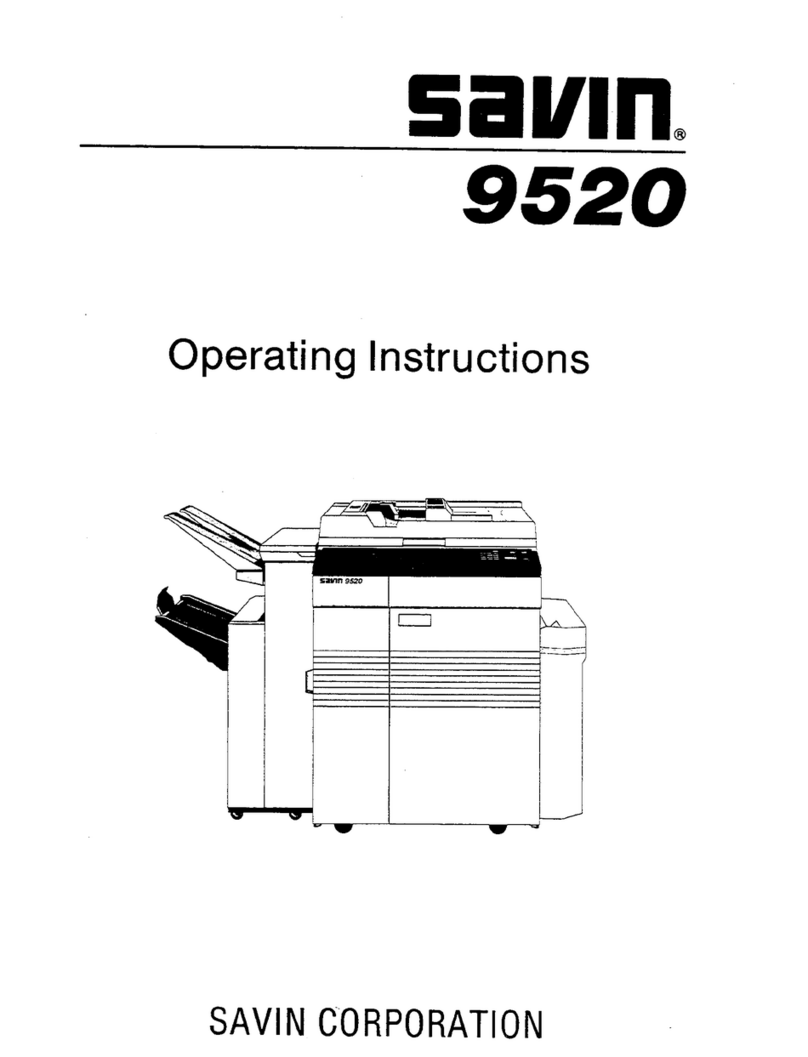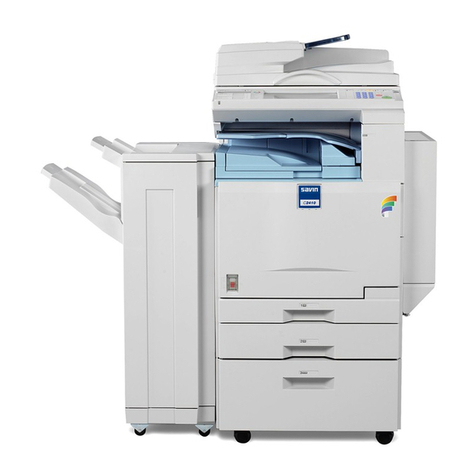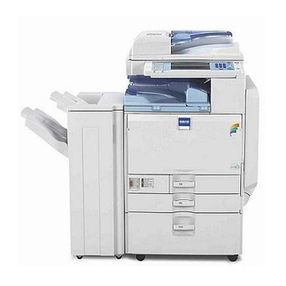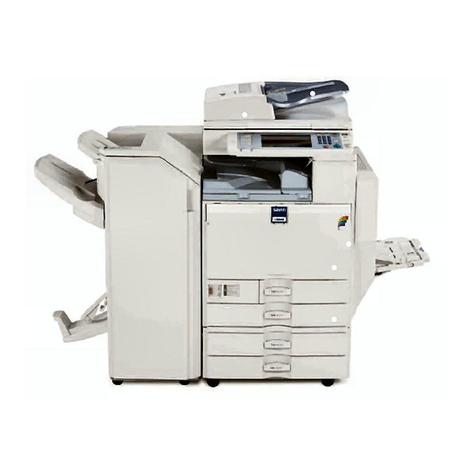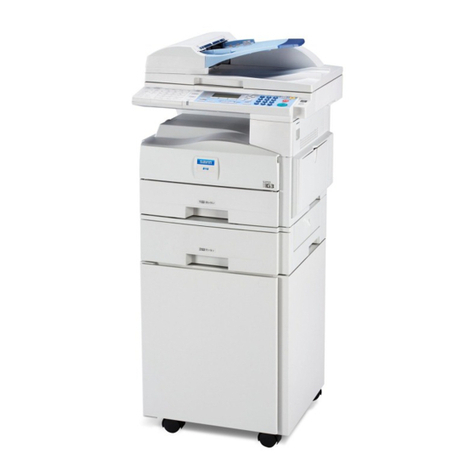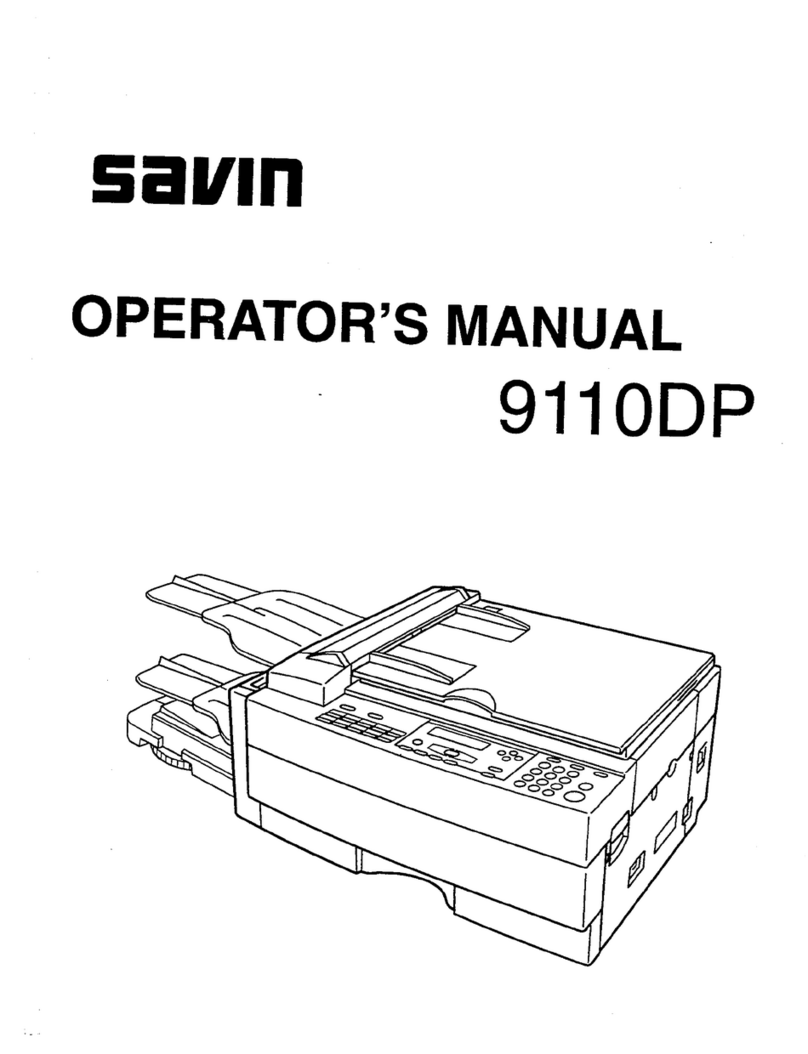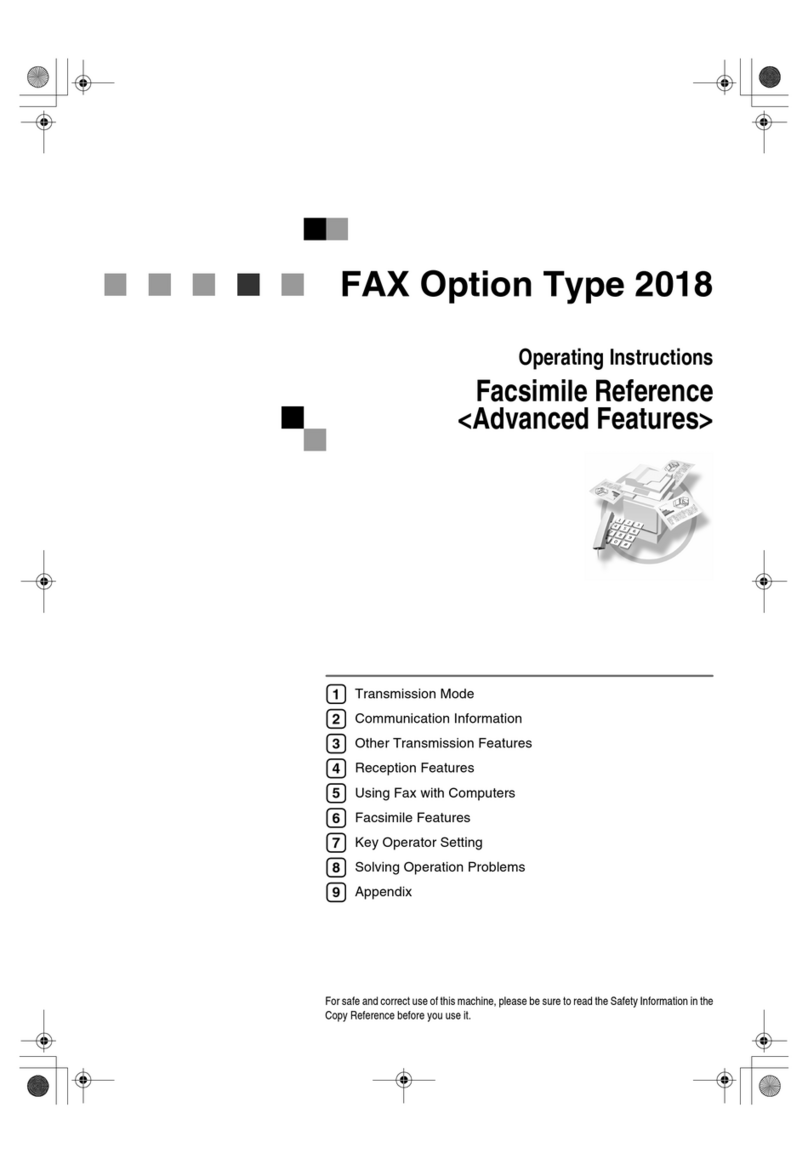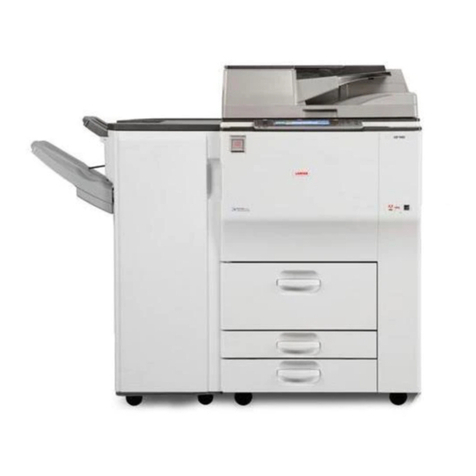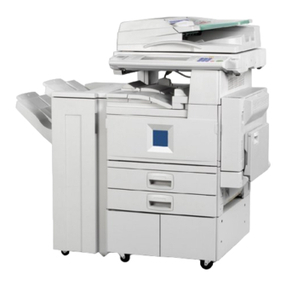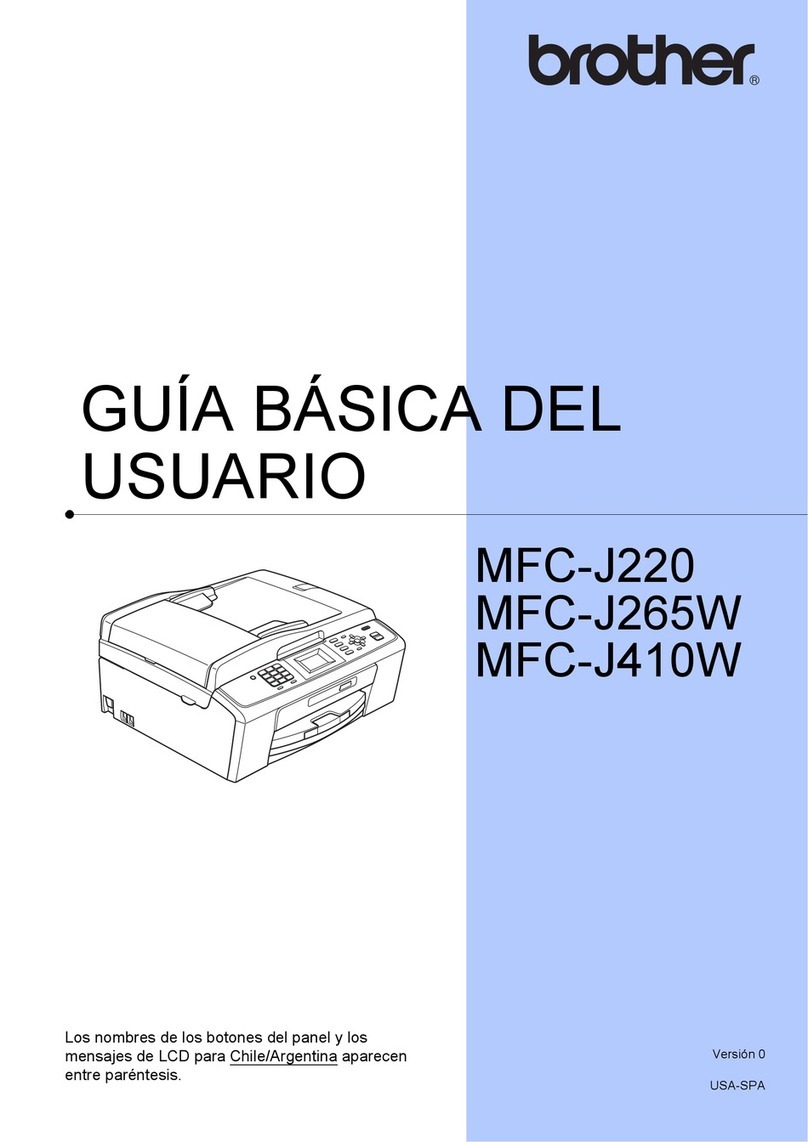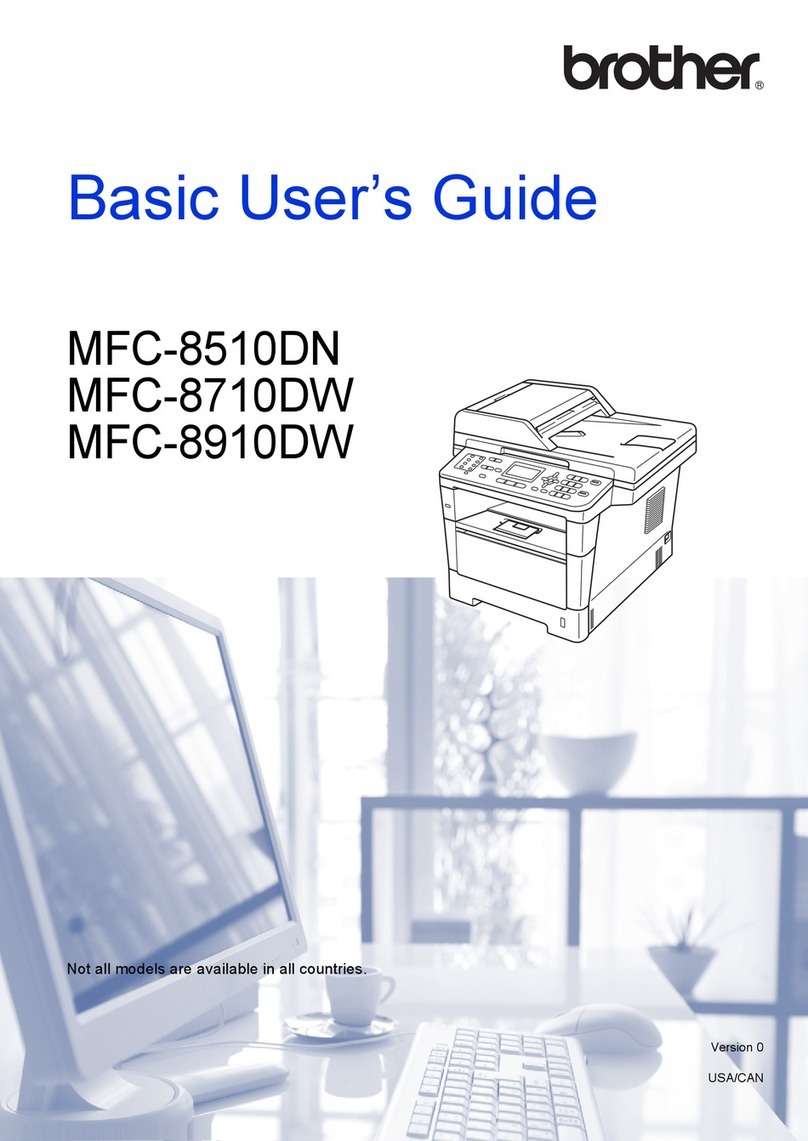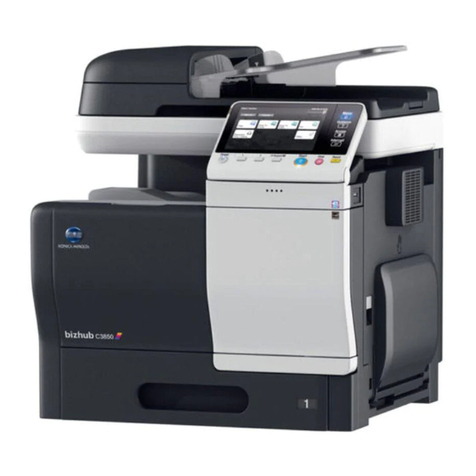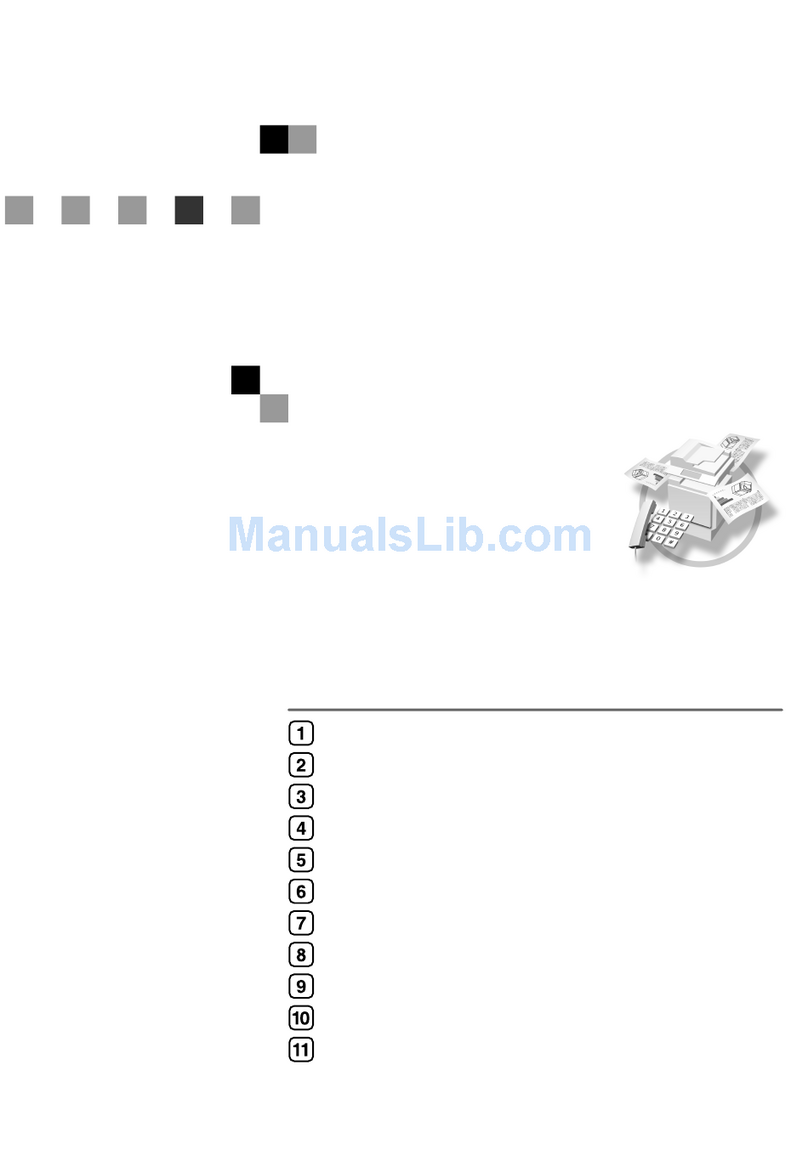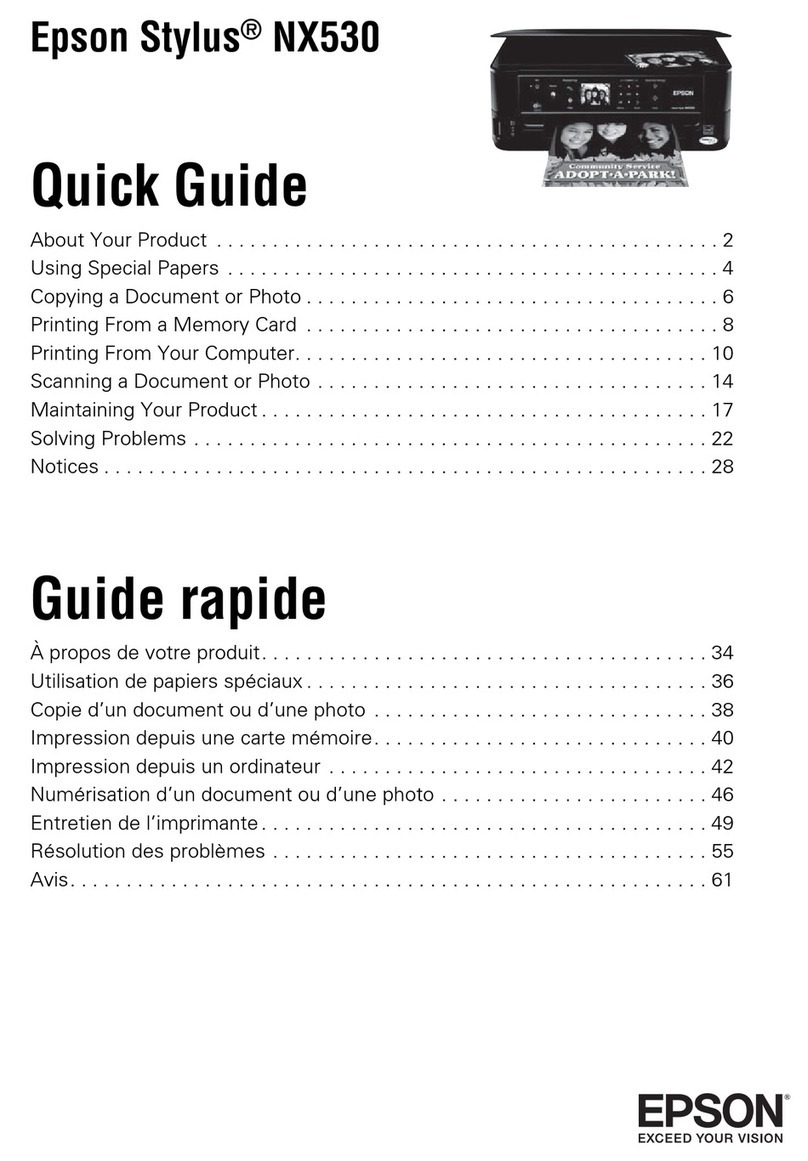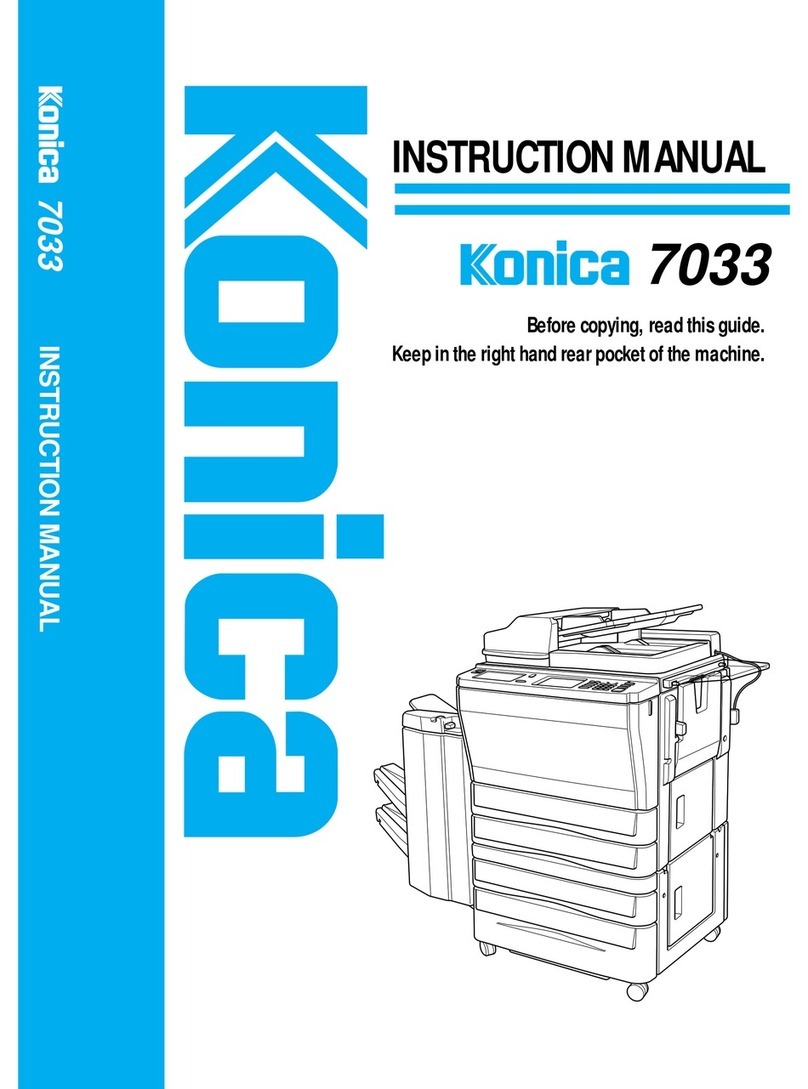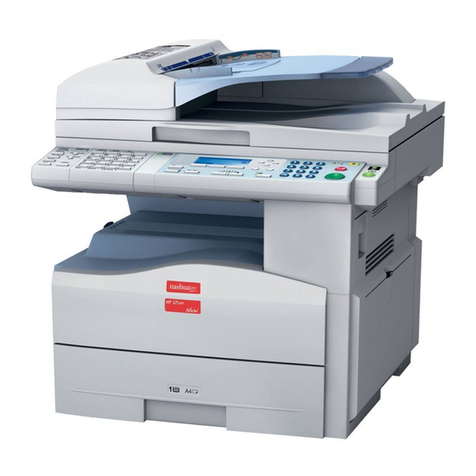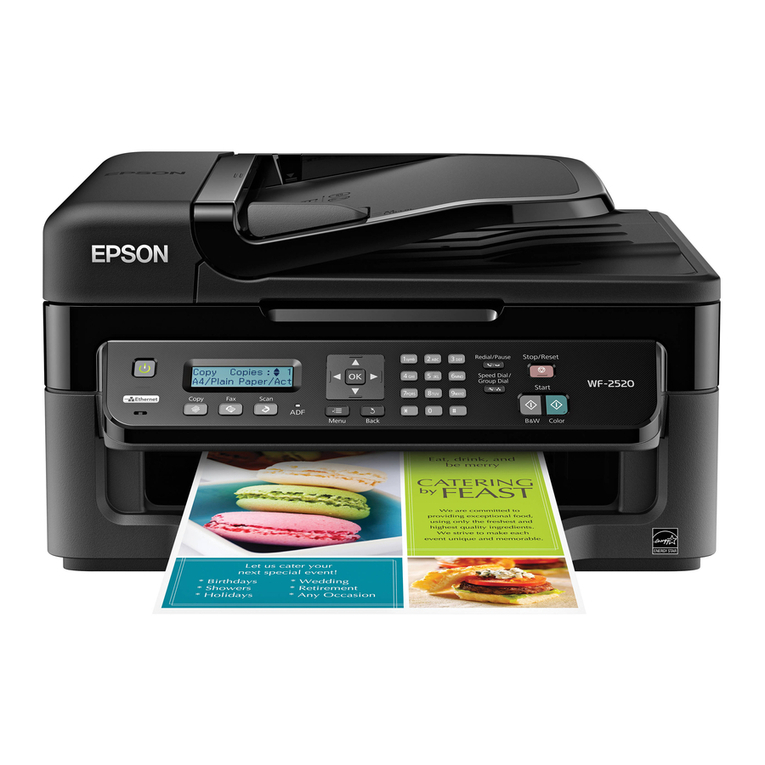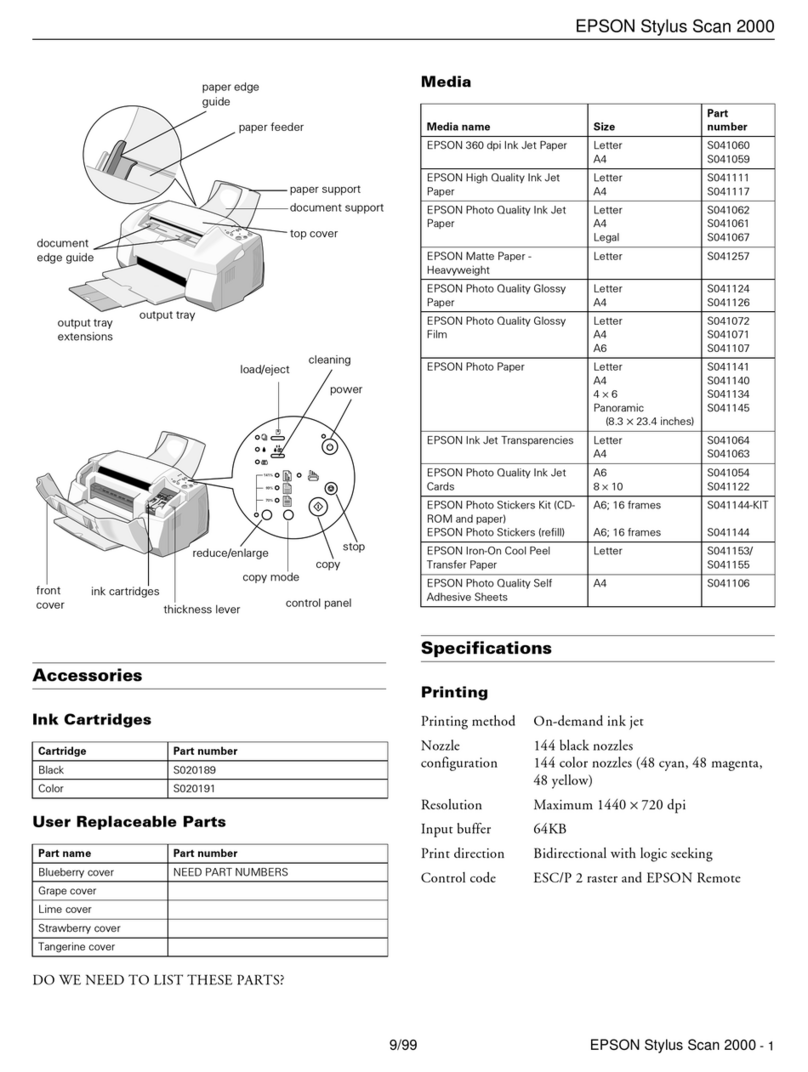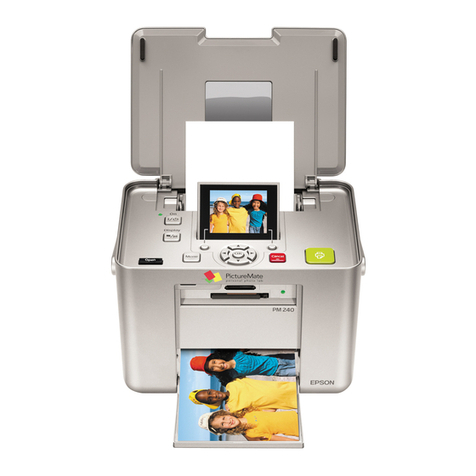
iii
TABLE OF CONTENTS
Manuals for This Machine......................................................................................i
How to Read This Manual .....................................................................................1
Symbols .....................................................................................................................1
1. Getting Started
Control Panel..........................................................................................................3
Reading the Display ...................................................................................................5
Reading the Display Panel and Using Keys ............................................................5
Standby Display....................................................................................................... 6
Communication Display...........................................................................................7
User Code Entry Display .........................................................................................8
2. Faxing
Transmission Modes .............................................................................................9
Switching between Memory Transmission and Immediate Transmission................10
Placing Originals..................................................................................................11
Placing a Single Original on the Exposure Glass.....................................................12
Bound original page order .....................................................................................13
Placing Originals in the Optional Auto Document Feeder (ADF) .............................13
Originals unsuitable for the optional Auto Document Feeder (ADF) .....................14
Setting a Scan Area .................................................................................................14
Original sizes difficult to detect .............................................................................. 17
Memory Transmission.........................................................................................18
Canceling a Memory Transmission....................................................................21
Before the Original Is Scanned ................................................................................21
While the Original Is Being Scanned........................................................................21
While the Original Is Being Transmitted...................................................................21
Before the Transmission Is Started..........................................................................22
Immediate Transmission.....................................................................................24
Canceling an Immediate Transmission .............................................................26
Before You Have Pressed the {Start}Key ...............................................................26
After You Have Pressed the {Start}Key .................................................................. 26
Scan Settings .......................................................................................................27
Resolution ................................................................................................................27
Original Type............................................................................................................28
Image Density (Contrast) .........................................................................................29
Mixing Scan Settings for a Multiple Page Original ...................................................31
When placing originals on the exposure glass ...................................................... 31
When placing originals in the optional Auto Document Feeder (ADF) ..................31
Dialing ...................................................................................................................32
Number Keys ........................................................................................................... 32
Pause ....................................................................................................................32
Tone ......................................................................................................................33
Using the {Tone}key with On Hook Dial ............................................................... 33
Using Destination Lists.............................................................................................33
